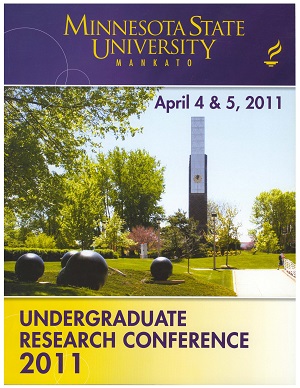A Review of Two Potential Risk Factors Among Gifted Students
Location
CSU 253/4/5
Start Date
4-4-2011 9:00 AM
End Date
4-4-2011 10:30 AM
Student's Major
Psychology
Student's College
Social and Behavioral Sciences
Mentor's Name
Carlos Panahon
Mentor's Department
Psychology
Mentor's College
Social and Behavioral Sciences
Description
Meeting the needs of exceptional students has a long history. Within this perspective, two gaps have persisted: (a) a consistent process for addressing the needs of gifted and talented students, and specifically, (b) strategies for addressing the needs of students who have also have learning disabilities or who underachieve relative to their potential within this population of students (Council for Exceptional Children, 2010).
This study reviewed some of the literature connected to gifted and talented students and two types of risks hypothesized to affect the academic progress of gifted and talented students. The first set of literature examined the parallels between risk factors for underachievement among gifted and talented students and for drug abuse among all students and in the gifted and talented student population. The second set of research addressed concerns voiced in the literature on twice-exceptional students that atypical reading skill development could pose significant challenges for intervention. The research that compared literature on drug abuse and under achievement risk factors showed clear parallels and specifically showed a link between underachievement and an increased risk of drug abuse. We considered that one reason this may have not received more attention among those assisting gifted students was based on the increased prevalence of protective factors among gifted students. The atypical reading skill development among twice-exceptional students was hypothesized to be a concern for jointly addressing needs for remediation and challenge. More direct research linking these factors across students was recommended.
A Review of Two Potential Risk Factors Among Gifted Students
CSU 253/4/5
Meeting the needs of exceptional students has a long history. Within this perspective, two gaps have persisted: (a) a consistent process for addressing the needs of gifted and talented students, and specifically, (b) strategies for addressing the needs of students who have also have learning disabilities or who underachieve relative to their potential within this population of students (Council for Exceptional Children, 2010).
This study reviewed some of the literature connected to gifted and talented students and two types of risks hypothesized to affect the academic progress of gifted and talented students. The first set of literature examined the parallels between risk factors for underachievement among gifted and talented students and for drug abuse among all students and in the gifted and talented student population. The second set of research addressed concerns voiced in the literature on twice-exceptional students that atypical reading skill development could pose significant challenges for intervention. The research that compared literature on drug abuse and under achievement risk factors showed clear parallels and specifically showed a link between underachievement and an increased risk of drug abuse. We considered that one reason this may have not received more attention among those assisting gifted students was based on the increased prevalence of protective factors among gifted students. The atypical reading skill development among twice-exceptional students was hypothesized to be a concern for jointly addressing needs for remediation and challenge. More direct research linking these factors across students was recommended.
Recommended Citation
Sowers, Melissa M. and Brooklynn J. Fredericksen. "A Review of Two Potential Risk Factors Among Gifted Students." Undergraduate Research Symposium, Mankato, MN, April 4, 2011.
https://cornerstone.lib.mnsu.edu/urs/2011/poster-session-A/22



